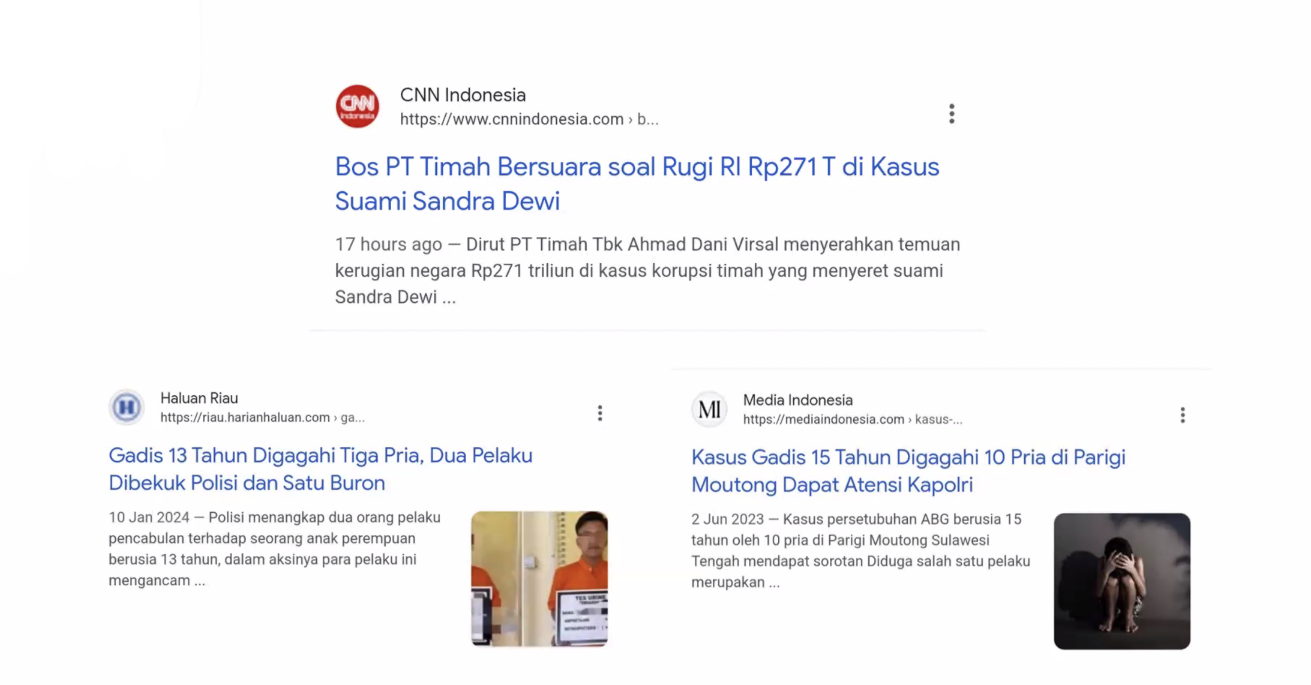Indonesian media are still evidently treating women like it’s pre-1945. No prosperity, just pure condemnation.
As mentioned in a webinar that was held on April 3, 2024, a collaboration between Bantu Teman Foundation and Bandung Bergerak, Indonesian media haven’t put an earnest effort to include the consideration of women’s rights to be seen as equal. In online media, the clear dismissal of women is evident in the juxtaposition of placing them to point fingers at while using them as a keyword to benefit from the algorithm. Therefore, women are, involuntarily, their stepping stones, even in cases where they are aggrieved.
Putting women in a corner to gain accessibility to a wider range of audiences roots from the flawed perception of women as the perfect victim: helpless and susceptible. DARVO (Deny, Attack, Reverse Victim, and Offender) is also applied in cases where the aggrieved woman will be depicted worse than the perpetrator itself in order to gain sympathy.
Media has to take full responsibility for what they convey through their writings. Until this day, they objectify women with the intention of exploiting them, proving that women haven’t gotten their independence even in the age of vast advancement in basically everything, except perhaps in the socio-cultural aspect. Journalists’s practice codes of ethics should be functional in nurturing journalists to work with extensive care towards gender perspectives.
Within the field of journalism itself, sexual harassment is not a foreign idea for women journalists to suffer from. Based on an experiment done by Walsh-Childers, Chance, and Herzog in 1996 on 227 women newspaper journalists, 60% of them believed that sexual harassment is a problem for women journalists and it is not a rare occurrence for 17% of them. (Walsh-Childers et al., 1996, 559-581)
It is important to remember that the increasing amount of women’s demand to be represented appropriately in media isn’t an expendable matter but instead an intrinsic issue that roots from conservative paradigms that are fundamentally defective and should no longer be applied in media as a subterfuge. Instead, a thorough understanding of how objectification disadvantages women should be ingrained within the field of journalism to make the media a safe place for women.
References
Walsh-Childers, K., Chance, J., & Herzog, K. (1996). Sexual Harassment of Women Journalists. Journalism & Mass Communication Quarterly, 73(3), 559-581.
Reporter: Naia Emmyra
Editor: Muhammad Aziz Fitratama, Shakila Azzahra M


